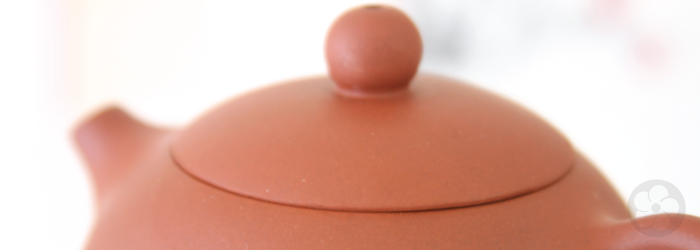How to Use a Yixing Teapot

Unglazed teapots made with clay from Yixing are an iconic part of Chinese tea culture, and have proven their value as tea tools ever since their introduction in the Ming Dynasty. Because they are finished without an outer coat of glassy glaze, the exposed clay remains somewhat porous, and over time it begins to absorb and enhance the aroma and flavor of the tea brewed in it. For devoted tea drinkers, Yixing teapots can become a way of life, but even casual connoisseurs can appreciate their aesthetic and practical appeal. Once you’ve decided to take the plunge, follow these simple steps to ensure your Yixing is always ready and waiting to brew a great pot of tea.
1. Dedicate it.
Due to the porosity of unglazed Yixing clay, these teapots must be dedicated to one style of tea in order to properly enhance flavor over time. But porosity is often overstated. All Yixing teapots are made from mineral-rich stoneware clay sourced near the city of Yixing, and fired at high temperatures to harden the clay in a process called vitrification. Vitrified clay has a glass-like molecular structure, and is slow to absorb tea flavor, even without a glossy coat of glaze. Because each Yixing teapot has a unique clay composition based on the source quarry, processing steps like aging, and final firing techniques and temperatures, we recommend brewing many different kinds of tea in a new Yixing pot before settling on a well-suited tea style to dedicate it to.

In fact, a high-fired Yixing teapot will not absorb a notable amount of flavor from a single serving of leaves, provided it is cleaned and emptied directly after brewing. Seasoning a Yixing is a long-term project, with estimated returns in flavor requiring years of regular investment. Instead of counting on the seasoning to improve tea flavor on a daily basis, it is better to choose a tea that is already suited to the pot. Very dense clay can enhance aromatic properties, while thick-walled teapots retain heat well for dark teas, and large-grained clay can soften the bite of a heavy roast. Think about these qualities while shopping if you have a tea style in mind, but don’t bother seasoning a pot with a tea that doesn’t taste good in it.
Learn more about which teaware is right for your favorite tea >>
2. Season it.
Once you’ve decided on a tea that tastes great when brewed in your new pot, it is usually recommended that you give the seasoning process a jump start with a tea bath. Some sources propose boiling the pot - either in clean water to “clear the pores” and extract any clay dust from the pot, or in a bath of your chosen tea. We don’t recommend placing any teapot in a large pot of boiling water, as anything but a careful simmer can quickly cause too much agitation and risk breaking the pot. And while a thorough rinse before use is a good idea, we view the seasoning tea bath as optional.

Instead, we prefer to season a Yixing teapot simply by brewing in it. With regular use, this process will start to happen fairly quickly, and we generally prefer to season with tea we would like to drink, rather than tea we would sacrifice to a boiling bath. (This is supposed to improve flavor, after all.) We have found that soaking spent leaves in the pot after a few infusions is a good way to speed the process along, and submerging the pot in a bowl of tea brewed for seasoning can create a desirable patina on the exterior of the pot.
3. Clean it.
During the course of everyday use, a Yixing teapot is shockingly easy to clean: simply remove spent leaves, rinse with water, and let dry with lid off. Because of their characteristic tight-fitting lids, it is important to let a Yixing pot dry completely inside before storing. To prevent water spots on the exterior, wipe with a wet cloth and polish with a dry one. And most importantly, never use detergent or chemical cleaners, since the clay will absorb the aromas!

With a little bit of care and maintenance, a good Yixing teapot can be an ideal brewing tool that continues to get better with age. If you have any questions or tips about caring for Yixing pots, share them with us in the comments below!
Sign up for our newsletter to get blog updates in your inbox!



Comments on this post (0)